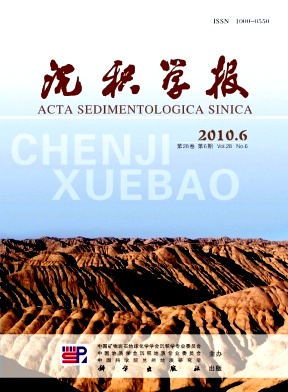Evaporative Minerals of the Upper 400m Sediments in a Core from the Western Qaidam Basin, Tibet
- Received Date: 1900-01-01
- Rev Recd Date: 1900-01-01
- Publish Date: 2010-12-10
-
Key words:
- evaporative minerals /
- geochemistry /
- halite /
- gypsum /
- Qahansilatu subbasin
Abstract: Qaidam Basin is a tectonically controlled depression on the northern margin of the Tibetan Plateau. In 2008, a long core was drilled in Qahansilatu subbasin in the western Qaidam Basin. The sediment layers in the upper 400 m alternate between evaporative mineral layers and carbonaceous clay layers. The detailed mineralogical investigation focused on evaporative minerals including halite, gypsum, mirabilite, thenardite, glauberite, eugsterite, bloedite, barite, cesanite, shortite, thermonatrite, gaylussite, nahcolite and inderborite. Gypsum and halite make up the majority of the evaporative minerals. Environmentally induced variations in the mineralogy and crystal habit of the sulfates have been extensively investigated. Gypsum has prismatic and pyramid habits, such as disc pyramid, stubby prismatic, slender prismatic. Visible isolated gypsum and aggregates (rosette/radial and twins) are mostly scattered in carbonaceous clay layers, suggesting secondary gypsum well developed. Gypsum may be a precursor mineral of glauberite, and thenardite is the precursor of bloedite. As a metastable and rare mineral, eugsterite does not appear in other Tibetan areas. It forms at the expense of pre existing gypsum or thenardite in the core at an experimental temperature of higher than room temperature. The presence of eugsterite indicates a warm and/or hot climate at its deposition time. Mineralogical variations have been explained by the brine evolution of NaCl, NaCaSO4, NaSO4, NaSO4Cl, NaCaSO4Cl, CaSO4, and NaMgSO4. For instance, NaMgSO4 type corresponds to the bloedite, while NaCaSO4Cl type to the assemblage of halite, gypsum and glauberite. The evaporative minerals and carbonaceous clay layers alternation indicates the shift between dry and wet climate. According to the thickness, eighteen evaporative stages and/or dry climate stages were identified from 0.97 Ma to about 0.03 Ma. The two early dry climate stages are identified at 0.96~0.97 Ma and 0.87 Ma. The other sixteen evaporative stages occurred from 0.78 Ma to about 0.03 Ma. The evaporaterich stages suggested that evaporation was high and groundwater inflow was sufficient at the subbasin.
| Citation: | LI Minghui. Evaporative Minerals of the Upper 400m Sediments in a Core from the Western Qaidam Basin, Tibet[J]. Acta Sedimentologica Sinica, 2010, 28(6): 1213-1228. |






 DownLoad:
DownLoad: